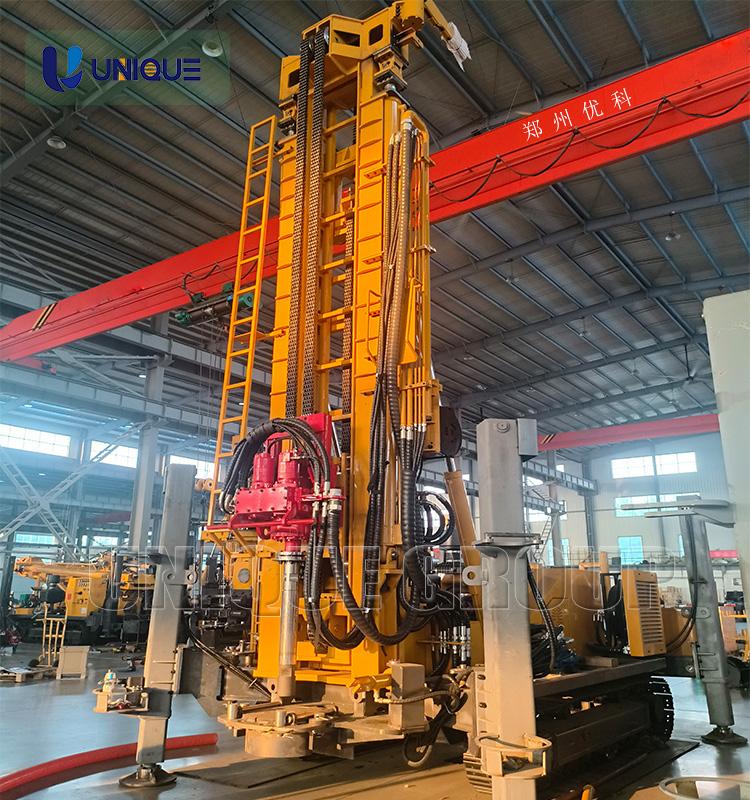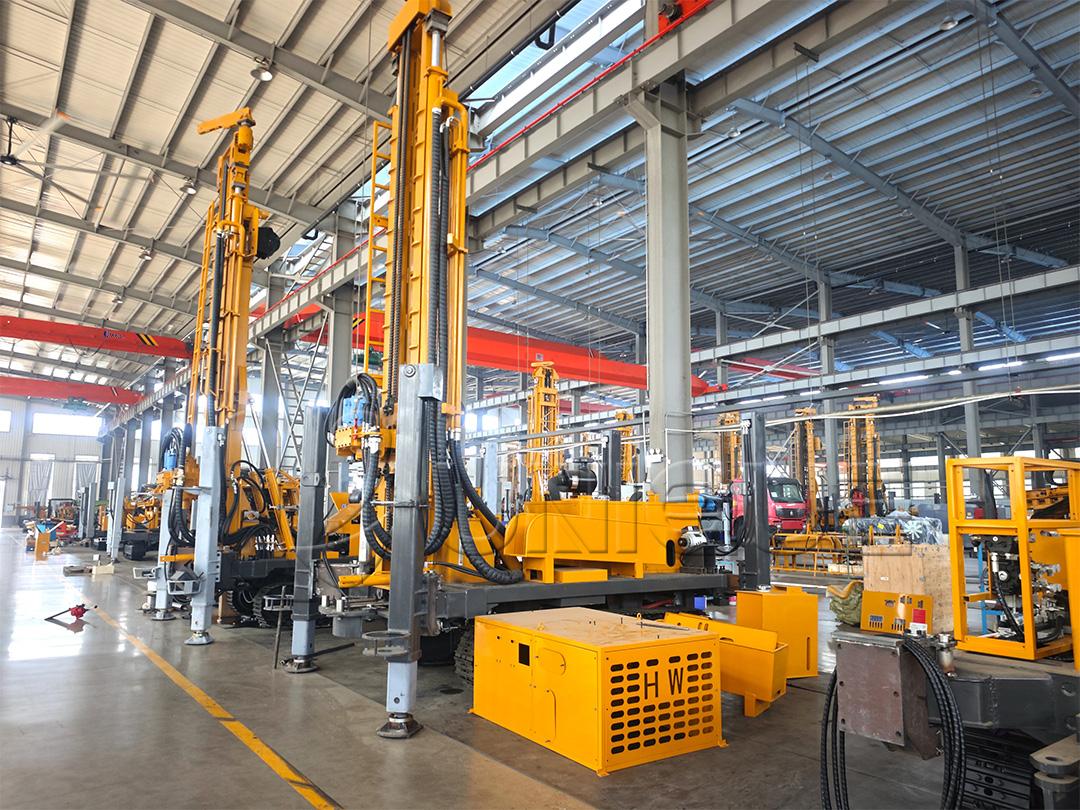What should I pay attention to when operating a pneumatic water well drilling rig?

Pneumatic water well drilling rigs are widely used in agricultural irrigation, industrial water supply, civil well drilling, and other scenarios due to their efficiency and flexibility. However, in actual drilling processes, operational details directly affect drilling efficiency, equipment lifespan, and construction safety. This article summarizes the core considerations for pneumatic water well drilling rig operations to help operators standardize procedures, reduce faults, and improve work efficiency.
Hole Blowing: The Foundation of Efficient Drilling
Pneumatic water well drilling rigs rely on compressed air for slag discharge. The timely removal of bottom-hole rock powder and cuttings is crucial to avoid sticking and improve penetration efficiency. During drilling, focus on hole mouth slag discharge status and drilling speed, and adjust operations flexibly:
If slag discharge is smooth and penetration is stable, there’s no need to frequently lift the drill string; maintain normal drilling.
If "penetration continues but slag discharge is poor" (e.g., rock powder accumulates, slag discharge volume drops sharply), lift the drill string briefly (with the impactor paused) after drilling a certain depth (usually 50-100cm). The instantaneous high wind speed generated by lifting the drill string will blow out accumulated cuttings and even larger rock fragments (up to 510g) from the hole. Resume drilling only after slag discharge returns to normal.
Core principle: Always keep the bottom of the hole free of cuttings to avoid drilling interruptions due to "buried drill".

Sudden Changes in Air Pressure: Timely Judgment and Emergency Handling
Air pressure is the "barometer" of pneumatic drilling rigs. During drilling, constantly monitor air pressure gauge readings, especially sudden increases in air pressure, and quickly identify causes and take action:
Possible causes: Mud balls or cuttings blocking the upper part of the down-the-hole hammer, or signs of buried drill (with obvious resistance when lifting the drill string).
Handling methods:
First, try slightly moving the drill string back and forth while maintaining the air compressor’s rated working pressure to blow out blockages with air flow impact;
If the above fails, slowly inject water from the hole mouth to dilute mud balls, which will then be discharged with the air flow; or inject an appropriate amount of foaming agent into the drill pipe to enhance slag discharge capacity.
Special note: When connecting a single drill pipe, start air supply immediately after connecting the kelly bar. Continue drilling only after bottom-hole cuttings are blown clean. Never lower the down-the-hole hammer to the bottom before starting air supply—this easily causes cuttings to backflow and block the down-the-hole hammer, leading to equipment failure.
Air Shutdown Timing: A Key Detail to Avoid Cuttings Residue
After drilling one single drill pipe, do not stop air supply immediately. Maintain air supply for 1-2 minutes to ensure residual cuttings in the hole are completely blown out, then lift the kelly bar before stopping air. This avoids cuttings 沉积 at the bottom or inside the drill pipe, reducing slag discharge pressure and sticking risks in the next drilling.
Down-the-Hole Hammer Lubrication: Necessary Maintenance to Extend Equipment Lifespan
The down-the-hole hammer is the core component of the drilling rig, and continuous friction between the piston and cylinder liner depends on sufficient lubrication:
For rigs with automatic oiling mechanisms (e.g., some imported multi-functional models), regularly check if the oiling system works normally to ensure lubricating oil enters the air supply pipeline in proportion.
For equipment without automatic oiling mechanisms, manually add oil promptly (use special rig lubricating oil) when connecting drill pipes each time. This prevents excessive wear of the piston and cylinder liner due to insufficient lubrication, which shortens equipment lifespan.
Summary: Details Determine Efficiency and Safety
Efficient drilling with pneumatic water well drilling rigs relies on precise control of hole blowing, air pressure, air shutdown timing, and equipment lubrication. Standardized operations not only improve well drilling efficiency and reduce failure rates but also extend equipment lifespan, saving costs for long-term operations. Operators should flexibly adjust based on actual working conditions and integrate the above points into daily processes to make each drilling operation more stable and efficient.
- Information Technology
- Office Equipment and Supplies
- Cars and Trucks
- Persons
- Books and Authors
- Tutorials
- Art
- Causes
- Crafts
- Dance
- Drinks
- Film
- Fitness
- Food
- Jogos
- Gardening
- Health
- Início
- Literature
- Music
- Networking
- Outro
- Party
- Religion
- Shopping
- Sports
- Theater
- Wellness



